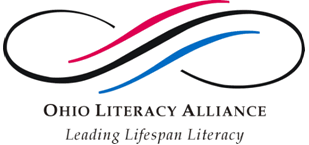
Keyword - Content Area Literacy
- Content area literacy
- Instruction embedded in content, including language arts teachers using content area texts and content area teachers providing instruction in literacy strategies and processes
Agee, J. (2000). What is effective literature instruction? A study of experienced high school English teachers in differing grade- and ability- level classes. Journal of Literacy Research, 32, 303-348.
Alvermann, D., Young, J., Weaver, D., Hinchman, K., Moore, D., Phelps, S., Thras, E., Zalewski, P. (1996). Middle and high school students’ perceptions of how they experience text-based discussions: A multicase study. Reading Research Quarterly, 31, 244-267.
Dillon, D. R., O’Brien, D. G., & Moje, E. B. (1994). Literacy learning in secondary school science classrooms: A cross-case analysis of three qualitative studies. Journal of Research in Science Teaching, 31, 345-362.
Draper, R. J. (2002). Every teacher a literacy teacher? An analysis of the literacy-related messages in secondary methods textbooks. Journal of Literacy Research, 34, 357- 384.
Guthrie, J. T., & Davis, M. H. (2003). Motivating struggling readers in middle school through an engagement model of classroom practice. Reading and Writing Quarterly, 19, 59-85.
Hammond, J., & Macken-Horarik, M. (1999). Critical literacy: Challenges and questions for ESL classrooms. TESOL Quarterly, 33, 528-544.
Harmon, J., & Hedrick, W. (2005). Research of vocabulary instruction in the content areas: Implications for struggling readers. Reading and Writing Quarterly, 21, 261-280.
Hobbs, R. & Frost, R. (2003). Illuminating constructivism: Structure, discourse, and subjectivity in a middle school classroom. Reading Research Quarterly, 37, 278- 308.
Hynd, C. R. (1999). Teaching students to think critically using multiple texts in history. Journal of Adolescent and Adult Literacy, 42, 428-436.
Ivey, G., & Broaddus, K. (2001). "Just plain reading": A survey of what makes students want to read in middle school classrooms. Reading Research Quarterly, 36, 350-377.
Kucan, L., & Beck, I. L. (2003). Inviting students to talk about expository texts: A comparison of two discourse environments and their effects on comprehension. Reading Research and Instruction, 42, 1-29.
Moje, E. B., & Ciechanowski, K. M., Kramer, K., Ellis, L., Carrillo, R., & Collazo, T. (2004). Working toward third space in content area literacy: An examination of everyday funds of knowledge and discourse. Reading Research Quarterly, 39, 38- 70.
Mosborg, S. (2002). Speaking of history: How adolescents use their knowledge in reading the daily news, Cognition and Instruction, 20, 323-358.
Paterson, P.O. (2000). The role of text in peer- led literature circles in the secondary classroom. In T. Shanahan & F.V. Rodriguez-Brown (Eds.), Forty-ninth yearbook of the National Reading Conference (pp. 235-251). Chicago: National Reading Conference.
Sturtevant, E. G., & Linek, W. M. (2003). The instructional beliefs and decisions of middle and secondary teachers who successfully blend literacy and content. Reading Research and Instruction, 41, 74-89.
Short, D. (1994). Expanding middle school horizons: Integrating language, culture, and social studies. TESOL Quarterly, 28, 581-608.
Thomas, H. K. (1999). The social construction of literacy in a high school biology class. In T. Shanahan & F. Rodriguez-Brown (Eds.), Forty-eighth yearbook of the National Reading Conference Yearbook (pp. 317-328). Chicago: National Reading Conference.
Young, K. M., & Leinhardt, G. (1998). Writing from primary documents: A way of knowing in history. Written Communication, 15, 25-68.
| Back to Keywords | HOME |